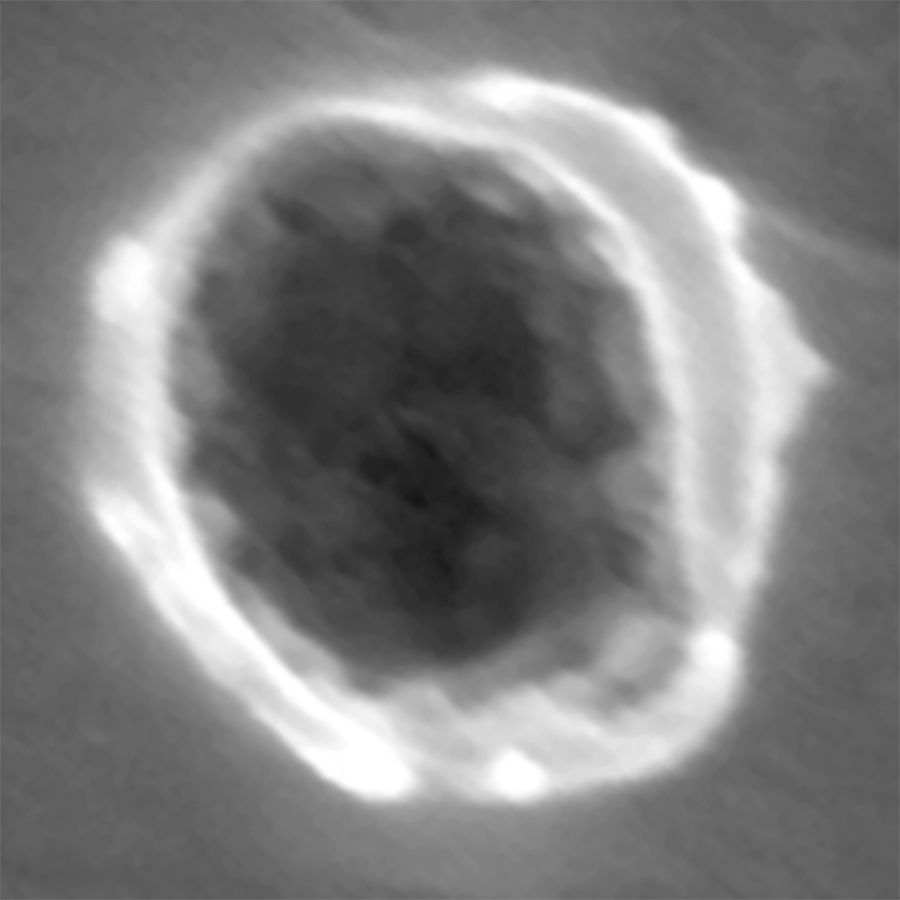Interstellar Visitors? Dust Grains May Be From Outside Solar System

Sometimes it’s a good thing for science equipment to sit around gathering dust: A NASA spacecraft designed to do just that has captured several specks that may be from outside the solar system, researchers say.
Additional tests must be done to confirm the particles' origin, but the evidence suggests that seven specks of dust gathered by NASA's Stardust spacecraft came from interstellar space, possibly produced in a supernova explosion millions of years ago.
"They are very precious particles," said Andrew Westphal, a physicist at the University of California, Berkeley's Space Sciences Laboratory and lead author of the study detailed today (Aug. 15) in the journal Science. [See Images of Stardust's Alien Dust Grains]
The specks could provide clues about the origin and evolution of interstellar dust that can't be found through astronomical observations, Westphal said in a statement.
Gathering dust
NASA's Stardust mission, launched in 1999, was designed to collect dust from comet Wild-2 and bring the particles back to Earth in 2006. Scientists have now examined dust particles found in the spacecraft's aerogel and aluminum foil dust collectors. Aerogel is an extremely lightweight solid made up of gel and gas.
The researchers analyzed the chemical composition and structure of the particles, finding them to be quite diverse. The small ones differ significantly from the big ones, which have a fluffier, snowflake-type structure, the scientists said.
Sign up for the Live Science daily newsletter now
Get the world’s most fascinating discoveries delivered straight to your inbox.
The two biggest particles contain a crystalline material called olivine (magnesium-iron-silicate), which suggests they came from dusty disks around other stars, altered by exposure to the interstellar medium, which is the mysterious region between stars.
The particles left tracks on the spacecraft's collectors, and the researchers scanned these and turned them into images that could be explored using a virtual microscope program called Stardust@home. Using the program, citizen scientists who call themselves "Dusters" combed through more than a million images to look for dust tracks.
The volunteers identified two particles, each only about one-fiftieth of the width of a human hair. They discovered a third track from a particle that came from the direction of the interstellar wind, created by the movement of the solar system through an interstellar cloud of gas, but this was traveling so fast that it vaporized, the researchers said. In addition, they found 29 tracks from particles that were blown out of the spacecraft itself.
Another 100 of the tracks identified by the volunteers still need to be analyzed. Also, only 77 of the 132 aerogel panels on the spacecraft have been scanned. Still, the researchers don't expect to find more than a dozen specks of interstellar dust, only a millionth of the amount of cometary material picked up by the spacecraft's collectors.
Fluffy visitors
In addition to the three particles found by volunteers, the researchers detected four more particles in aluminum foils between the aerogel tiles on Stardust's collector tray that appear to have come from outside the solar system. These specks were actually melted remnants inside tiny craters on the spacecraft's collectors.
The particles' diversity was a surprise, study co-author Rhonda Stroud, a physicist and nanoastronomer at the Naval Research Laboratory in Washington, D.C., said in a statement. Some of the fluffy ones were "sort of like a tossed salad" — a clump of particles, rather than one dense particle, as suggested by the simplest models of interstellar particles, Stroud said.
Three of these particles, which were only a few tenths of a micron in size, contained sulfur compounds, which some scientists have said do not occur in interstellar dust particles. The researchers plan to analyze the remaining 95 percent of the foils to look for enough particles to confirm and explain their interstellar origins.
The researchers also plan to perform additional tests of the two particles embedded in the aerogel to look at the amount of oxygen isotopes, or atomic forms, which would yield more support for the idea that these particles came from interstellar space. Supernovas and bright, old stars called red giants produce oxygen and other elements needed for life on Earth, the researchers said.
Follow Tanya Lewis on Twitter and Google+. Follow us @livescience, Facebook & Google+. Original article on Live Science.











